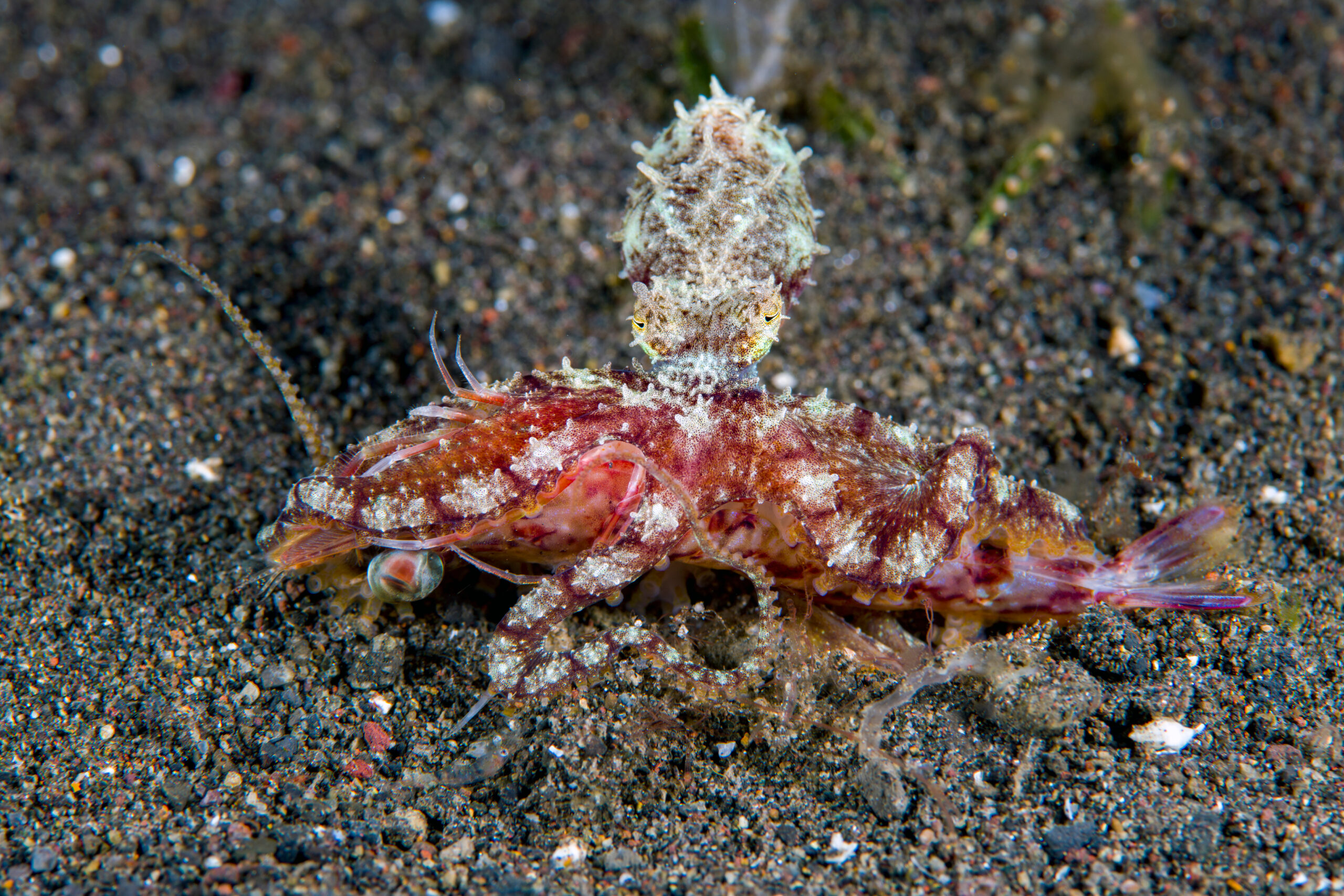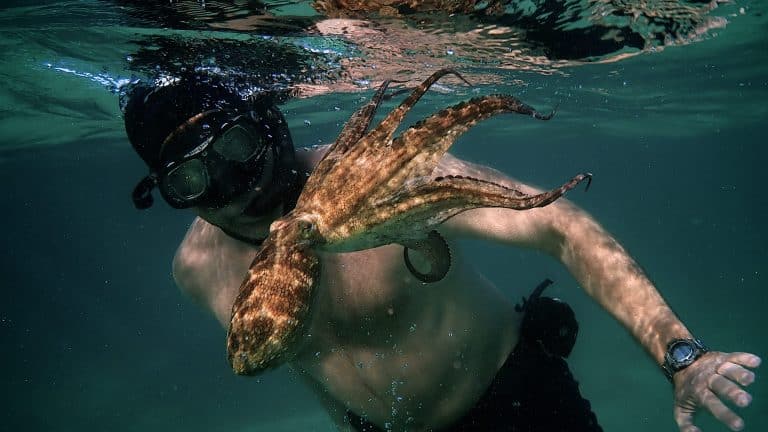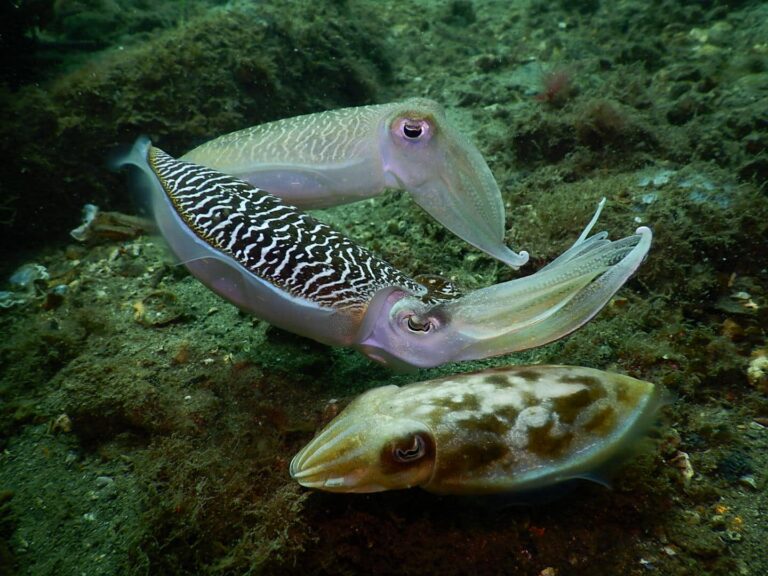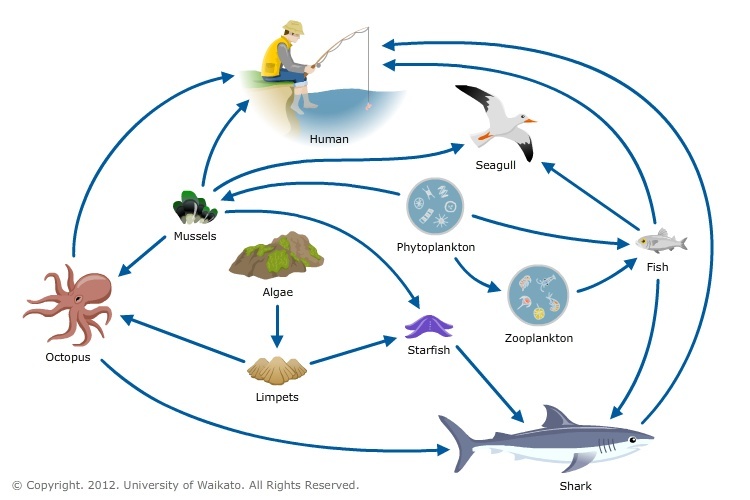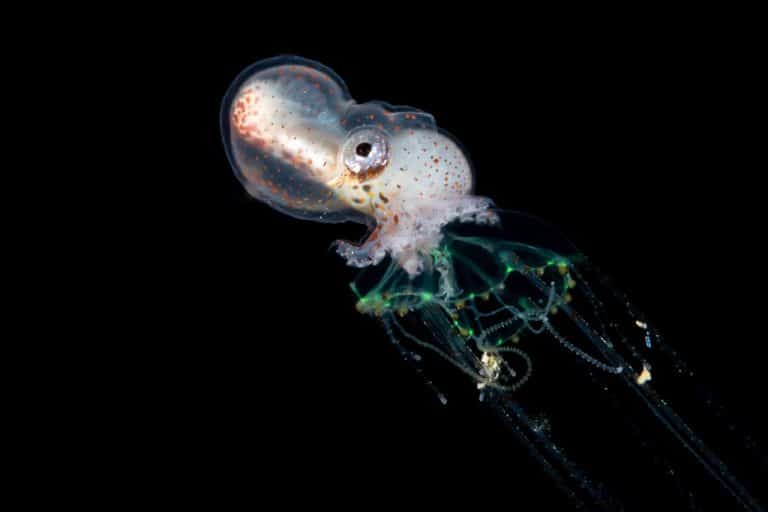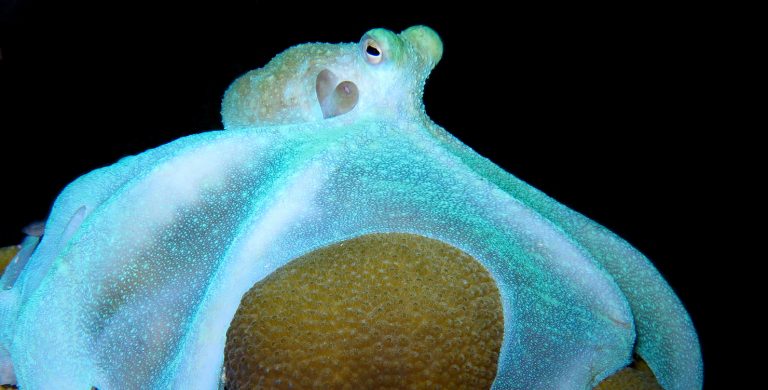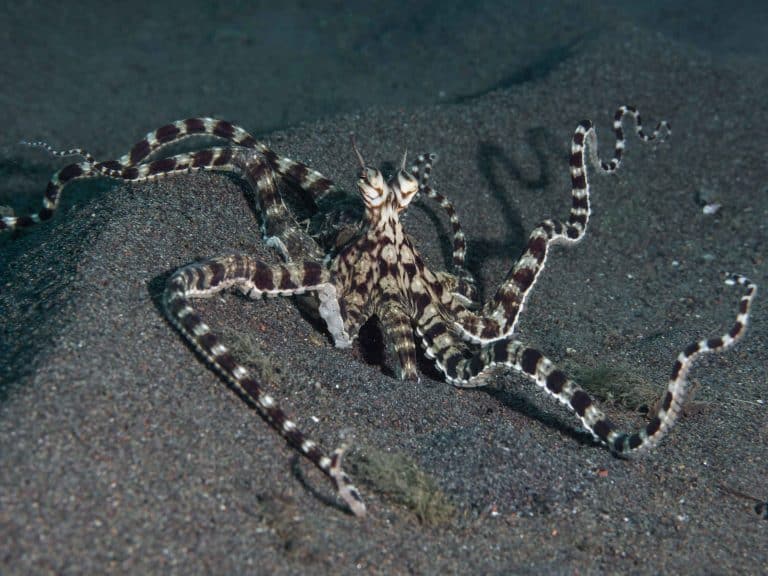What Do Octopus Eat?
If you have been following OctoNation for a while now and have been educating yourself on all things octopus, I’m sure the question has come to mind- What do octopus eat? Well, today, I am going to share everything there is to know about octopus diets along with what their favorite meals are. Also, stick around to watch a really cool video where an octopus captures mantis shrimp and eats them!

We all need to eat but how we go about making that happen is vastly different depending on what type of animal you are.
While we sit idly by waiting with bated breath for our UberEats to arrive with cooked food specific to our liking, an octopus does not have that luxury (unless there is an underwater food delivery service that I have not been made aware of yet.)
No matter the species of octopus, they all need to search, catch and prepare their meals every time they get that twinge of hunger!
They do, in fact, become an Octo Chef.
Octopus diet- What’s on the menu?
So, it’s finally time to answer the question… What do octopus eat? Octopuses are generally not picky eaters, so the ocean is one big seafood buffet for them!
They typically go for:
- Fish snails
- Crabs
- Clams
- Mussels
- Lobsters
- Shrimp
- Squid
- Other octopuses
- And, even the occasional shark
These are all on an octopus’s menu. Even so, what octopus eat depends very much on their size and environment!
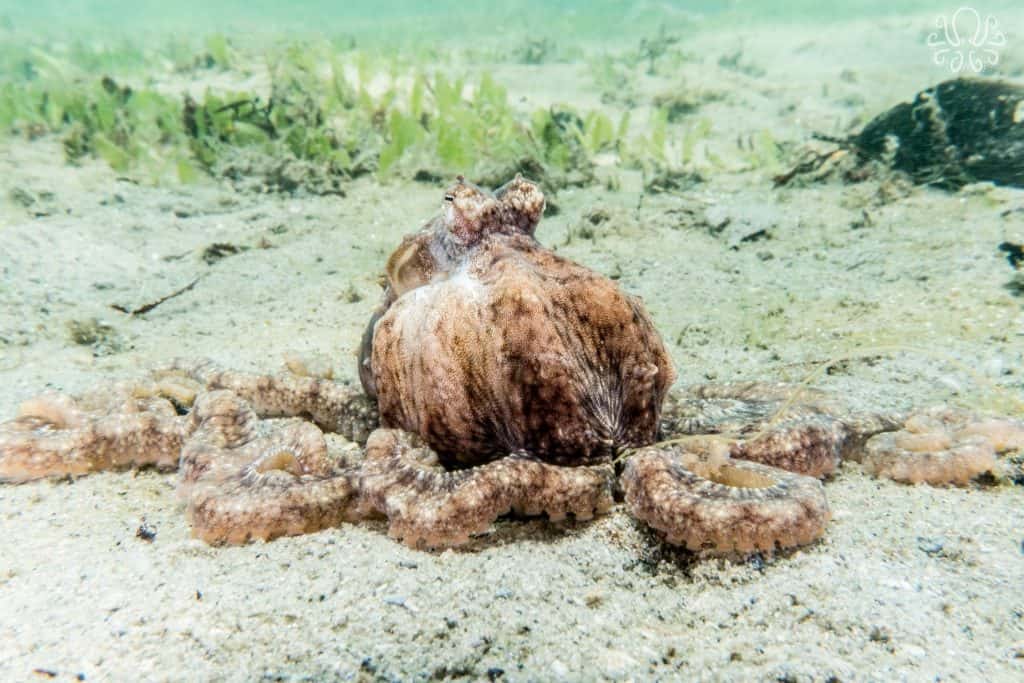
Octopus size and location matters!
The Atlantic Pygmy Octopus (Octopus joubini), a little nugget of an octopus measuring in at around 4 cm (1.5 inches), will have very different eating habits than the Giant Pacific Octopus (Enteroctopus dofleini) who can weigh 70.7 kg (156 pounds) with a 3-5 meter (9-16 foot) arm span.
You won’t find smaller octopuses going after the occasional dogfish shark – and even sometimes birds – like their larger cousins. Instead, they feed on:
- Smaller clams
- Crustaceans
- Marine snails
Freshly hatched octopus babies, who are no larger than a flea, primarily feed on plankton (microscopic animal and plant organisms).
🐙 Octopus Fun Fact
A study looking at cephalopod diets found that crustaceans were an overall favorite and were found in the stomachs of all octopuses, cuttlefish, and squid!
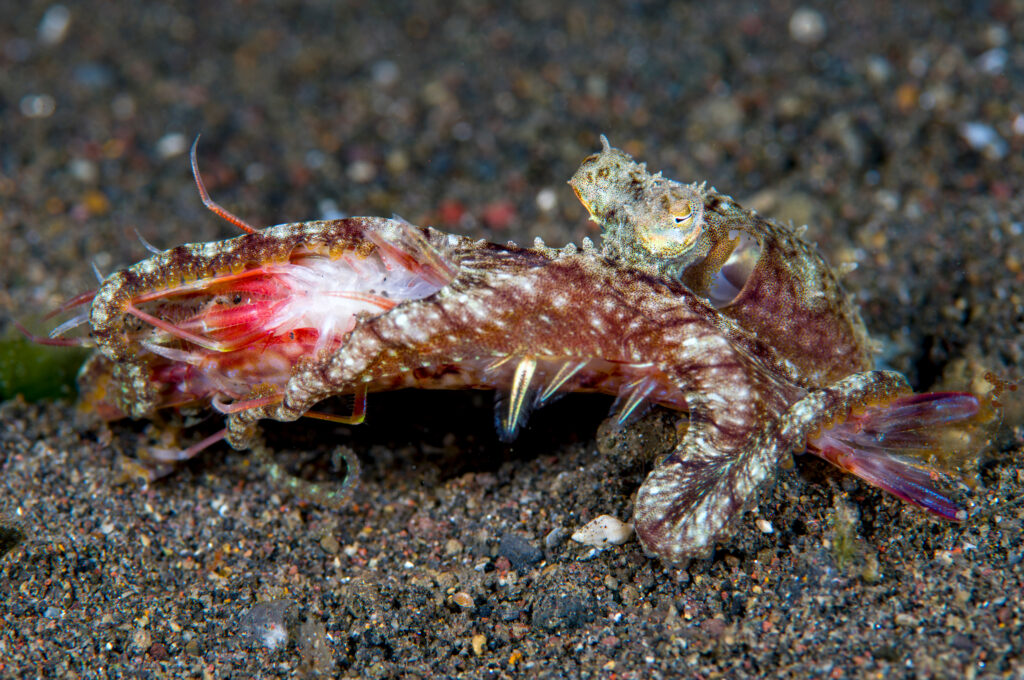
The environment they live in also dictates what octopuses are eating.
For example, the Dumbo Octopus (Grimpoteuthis sp.), who lives at extreme depths in the ocean, feeds on:
- Worms
- Snails
- Copepods
- Isopods
They generally are foraging and taking what they can get.
On the other hand, the Common Octopus (Octopus vulgaris), living on a bustling reef bursting with food, can be pickier searching around until they find their perfect lunch.
The only thing not on the menu: vegetables!
How does an octopus catch its food?
As the sun sets, most octopuses head out for the evening in search of a tasty treat. With sensitive suckers, 8 arms, and the capacity to squeeze through any space the size of their beak, not much can get between a hungry octopus and its dinner!
Octopuses use various techniques while hunting which includes, but are not limited to:
- Ambushing
- Luring
- Stalking
- Pursuing
- Hunting in disguise
The Common Octopus has even been observed using its ink to distract and disorientate its prey before they attack.
Octopus species dwelling on reefs in shallow waters also make use of their excellent eyesight to track down prey. Once they zero in, they can launch a full attack, grasping prey in their web of suckers and arms.
Watch out for those suckas!
An octopus’s suckers are a powerful tool to discriminate between surface textures and shapes and let them “taste” what they are touching. With over 10,000 chemoreceptors cells on a single sucker, octopuses can lazily cruise the reef sticking their arms in rock crevices to see if anything strikes their fancy.
This means that by the time an octopus has something in its mouth, it has already decided that it’s worth eating!
Once an octopus has its prey enveloped in its arms and immobilized, it gets to work preparing its meal for consumption.
🐙 Octopus Fun Fact
If you would like to see this for yourself, take a peek at this video and watch how an octopus captures and eats crab and mantis shrimp!
Octo Chef in the kitchen!
When looking for culinary excellence in the underwater world, let Octo Chef be your guiding light. While they only prepare meals for themselves, inside their mouth are all the tools they need to craft the perfect feast.
Let’s look into what completes an Octo Chef’s ultimate tool kit.
Did you know an octopus has a beak?
You can’t have a chef without a knife just like you can’t have an octopus without a beak! Just as knives are meant to dice and cut, an octopus’s beak – much like that of a parrot – is responsible for cutting flesh and busting open clams that are pried apart with their arms.
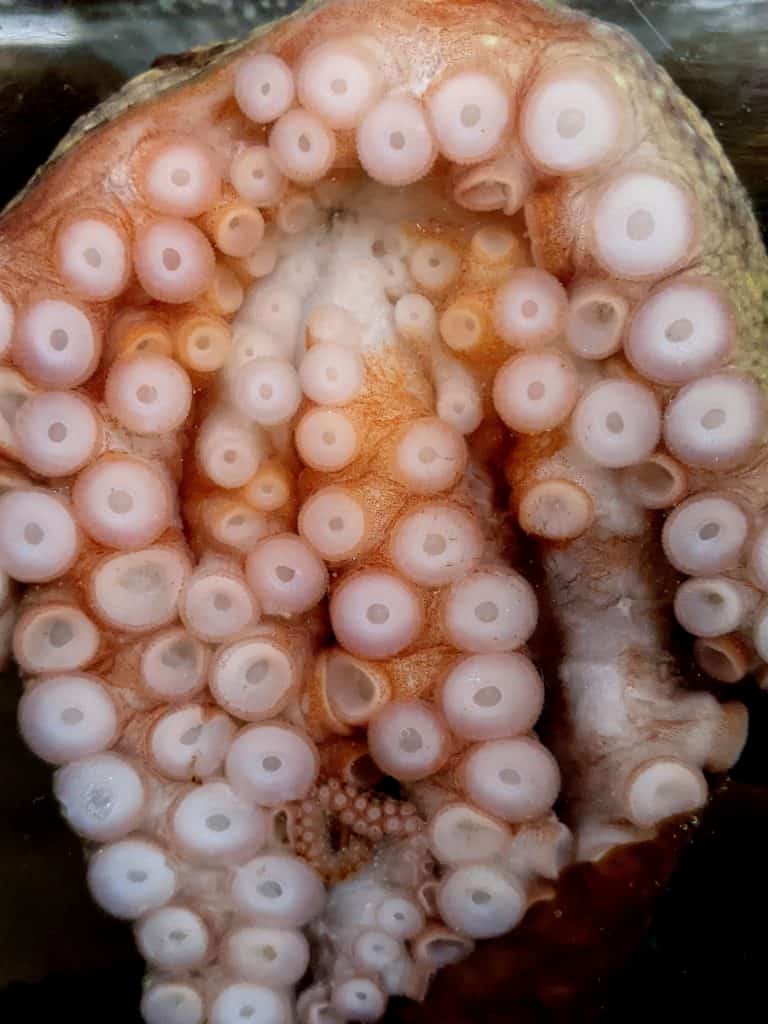
🐙 Octopus Fun Fact
Octopuses have an underbite! When the mouth is closed, its upper beak fits inside the lower beak.
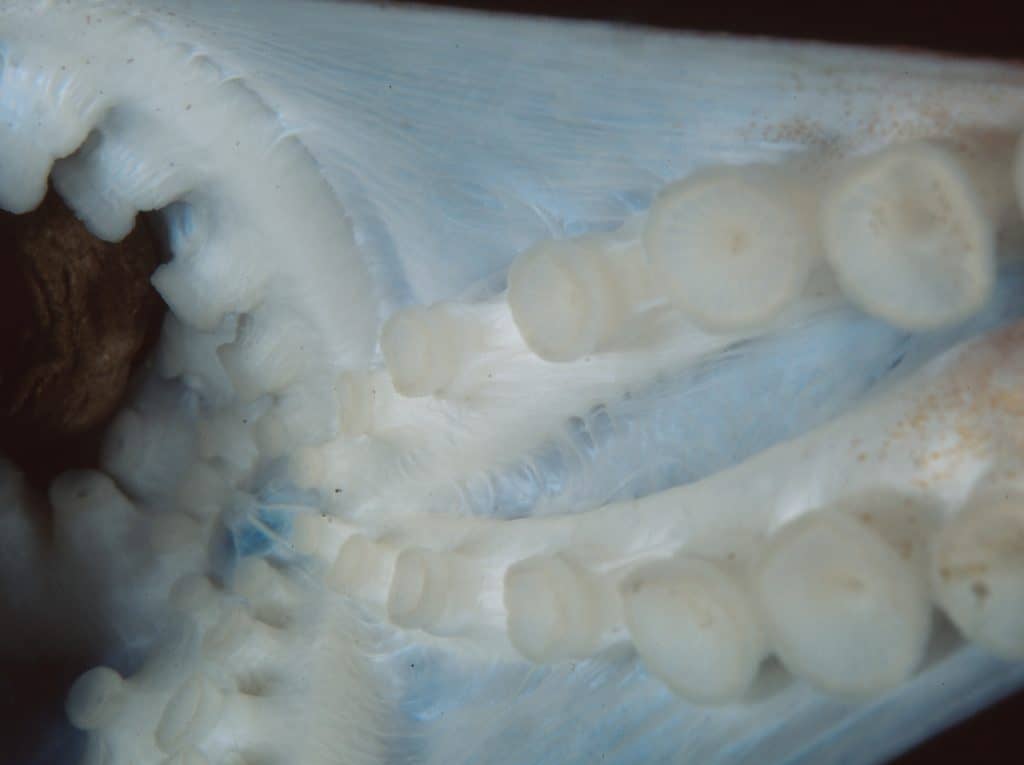
Look At That Rad Radula!
Next up in an octopus chef’s kit is the radula, a tongue covered with tiny teeth used to slurp clams and mussels out of their shells once they have been broken open.
These teeth move forward and back on the muscular tongue. As each row crosses the tip of the tongue the teeth become upright to cut pieces of the prey.
Here’s an illustration, but we’ll show you the reel thing below it! Wild huh? Don’t forget: The octopus beak is retractable like a cat’s claws– so the beak doesn’t just sit between the arms exposed all the time, it’s back behind it’s lips (like in the picture above!)
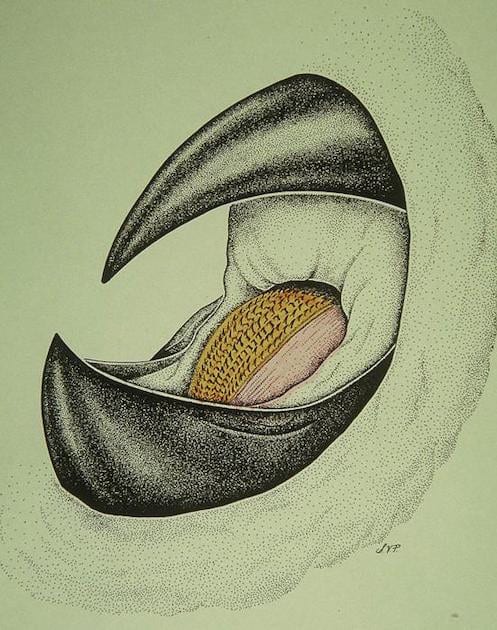
🐙 Octopus Fun Fact
You can estimate the size and get an approximate age of an octopus just by looking at its radula! The average length and width of the radula, along with the number of teeth, can be correlated to an octopus’s body weight.
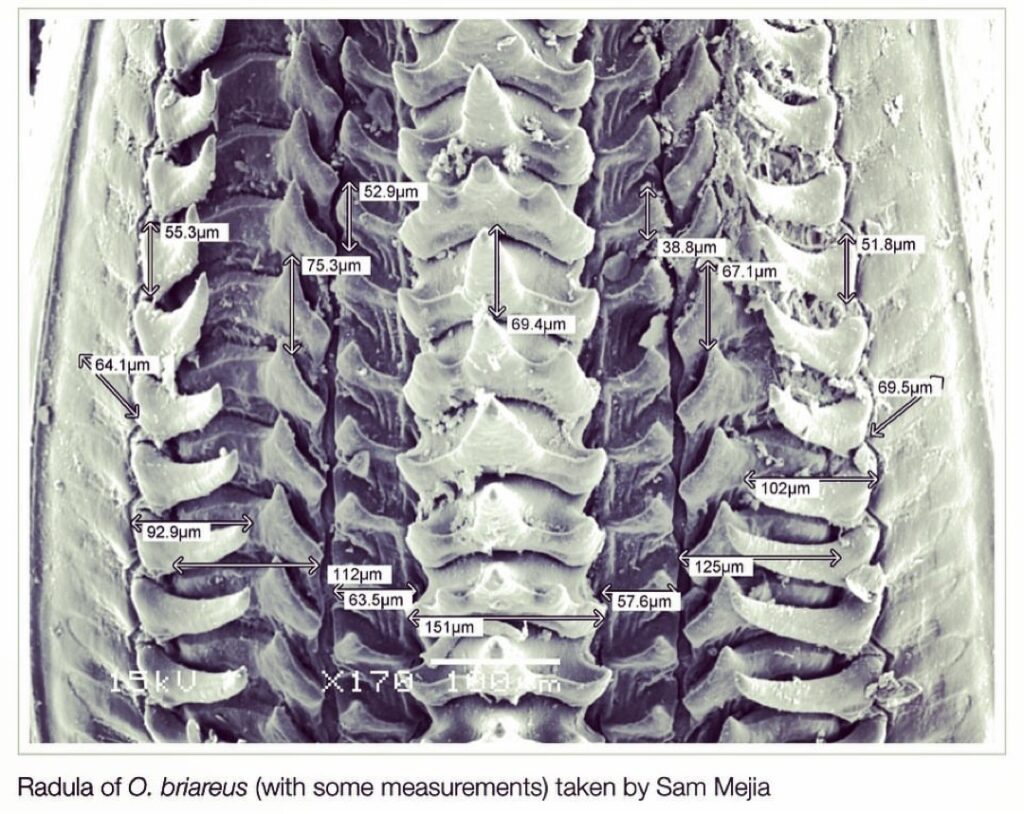
Salivary Papilla (With A Kick)
To complete the gastronomic experience, an octopus has another tooth-covered organ called the salivary papilla that lies just below the radula.
When an octopus finds a particularly delectable clam treat that it cannot wrench open with its powerful suckered arms, it uses its salivary papilla. This allows it to drill into the hard shells of clams and crustaceans.
Depending on the shell thickness, an octopus can spend hours drilling (what a terrifying time to be a clam!!).
When they finally make it through, they release a toxic cocktail that paralyzes their meal causing it to loosen the muscle from the shell. Much like getting your kitchen drill (because who doesn’t have one of those) and then using a meat mallet to tenderize your dinner.
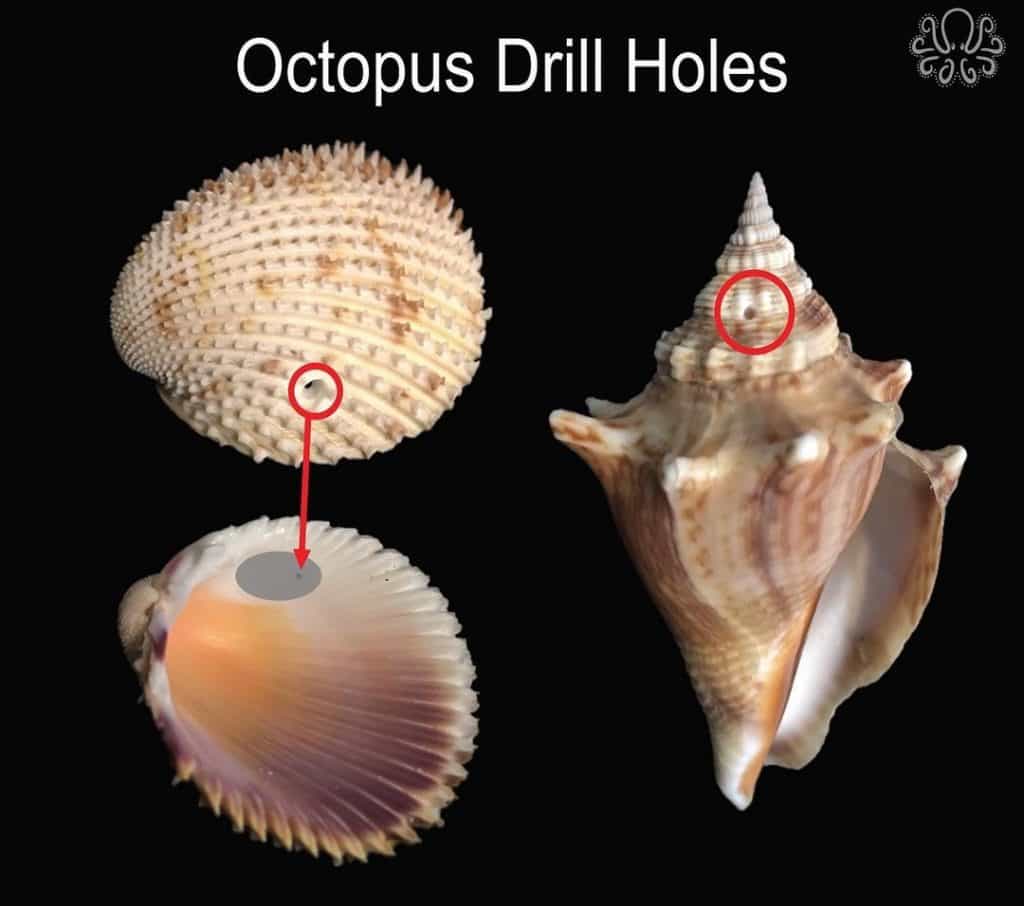
🐙 Octopus Fun Fact
Chelsea Bennice, OctoNation’s lead researcher, has observed that most octopus drill holes are close to the attachment site of a clam’s adductor muscle. Pretty incredible that octopuses know just where to drill to be the most effective!
So, why do octopus go through all this trouble to make sure that their food is smashed, crushed, and relaxed before they eat it?
Because their food travels down the esophagus, which passes through their donut-shaped brain, before getting to the stomach.
Luckily, this serious octopus design flaw was course-corrected with an impressive set of mouth tools to make sure that anything entering their body is well prepared and most definitely dead.
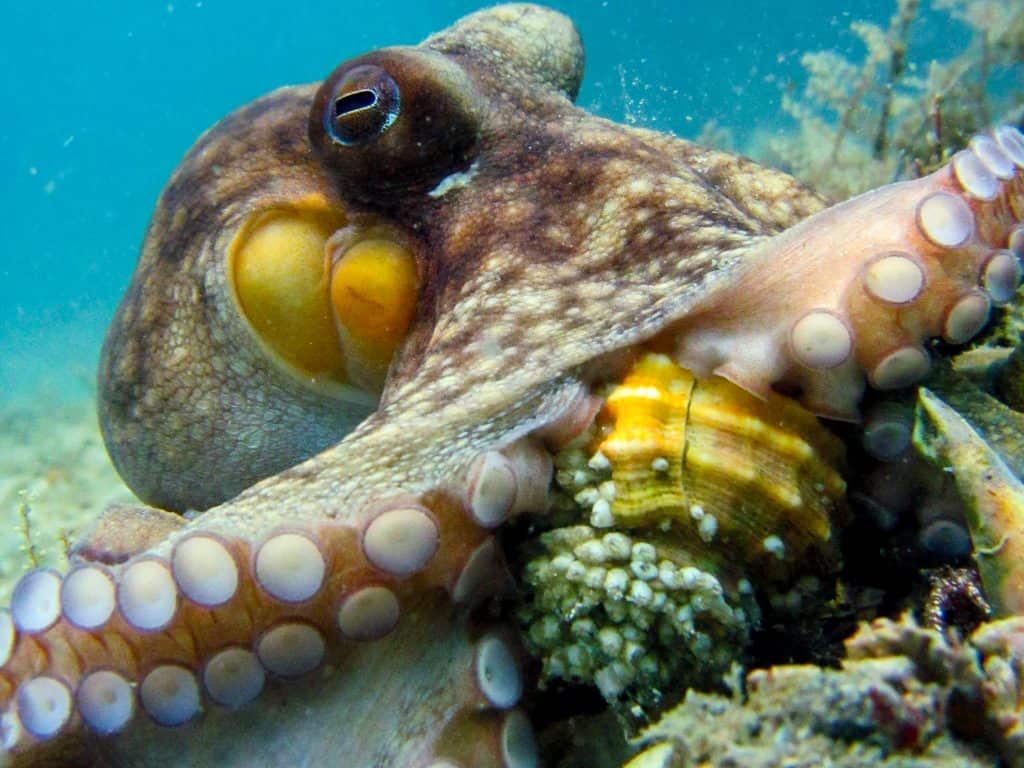
So, what do octopus eat? A LOT!
Not only are they incredibly resourceful when it comes to catching their dinner meal, but they have quite the palate when it comes to an octopus diet.
Did you enjoy learning about how and what an octopus eats?
If you want to educate yourself some more about all sorts of different cephalopods, take a look at our encyclopedia. Or, what we call it, our Octopedia!
Connect with other octopus lovers via the OctoNation Facebook group, OctopusFanClub.com! Make sure to follow us on Facebook and Instagram to keep up to date with the conservation, education, and ongoing research of cephalopods.
More Posts To Read:
- Fun Facts About The Strawberry Squid
- Octopus Sweater: The Perfect Hand-Stitched Addition
- The Octopus-Punch: The Truth Behind Why Octopuses Punch Fish
- Caribbean Reef Octopus: Everything You Need To Know
- Day Octopus: Everything You Need To Know
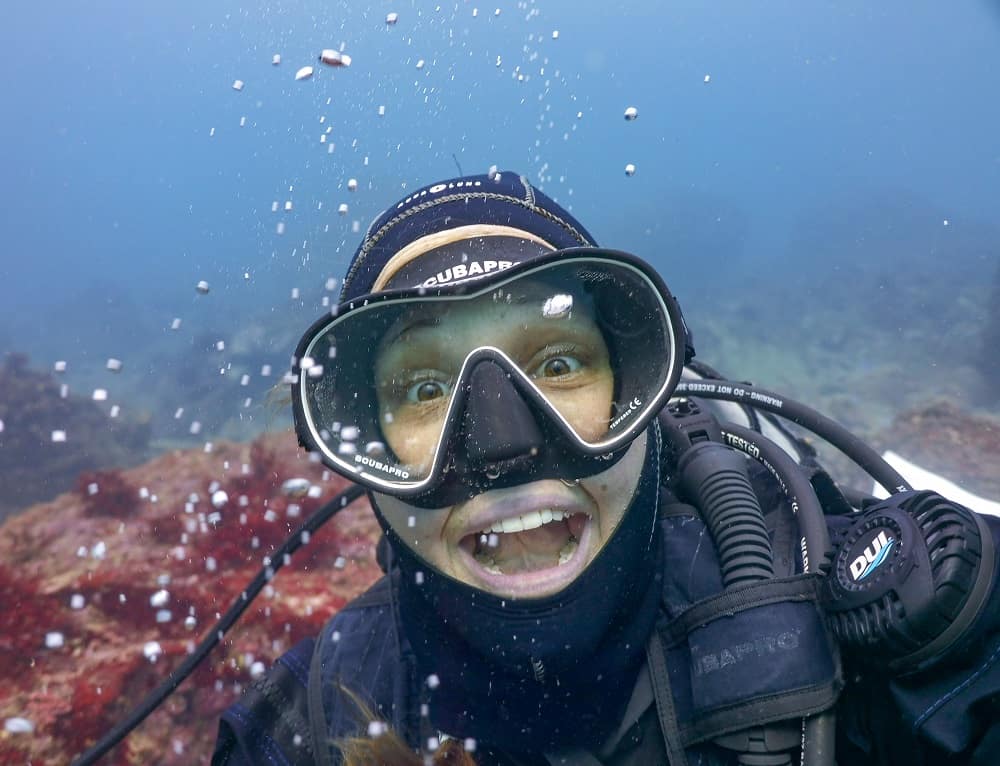
Corinne is a biologist with 10 years of experience in the fields of marine and wildlife biology. She has a Master’s degree in marine science from the University of Auckland and throughout her career has worked on multiple international marine conservation projects as an environmental consultant. She is an avid scuba diver, underwater photographer, and loves to share random facts about sea creatures with anyone who will listen. Based in Japan, Corinne currently works in medical research and scientific freelance writing!
